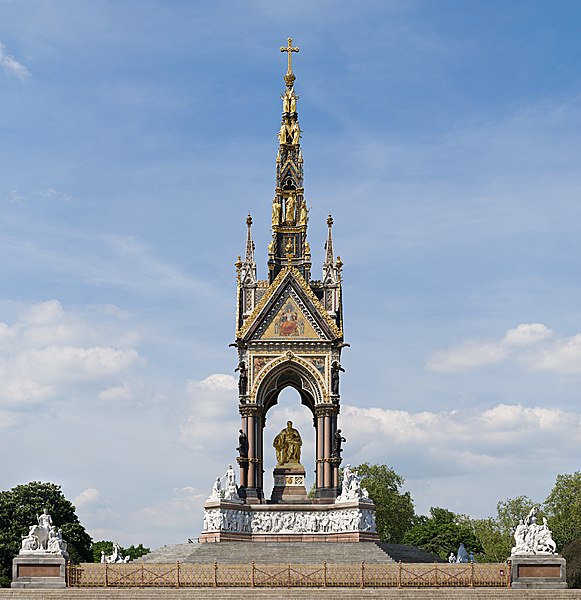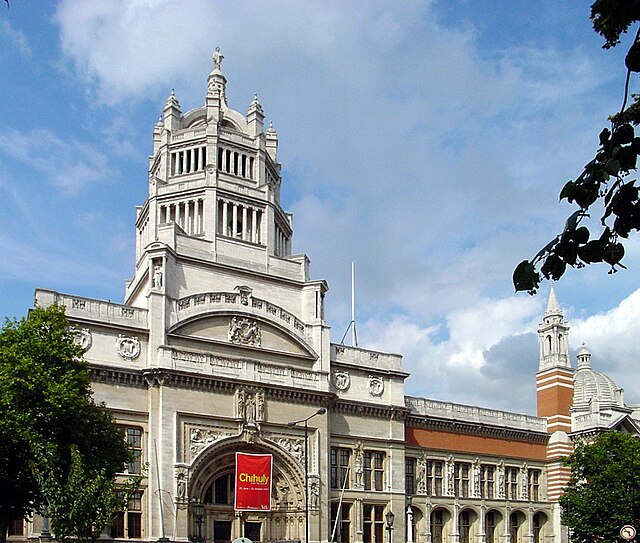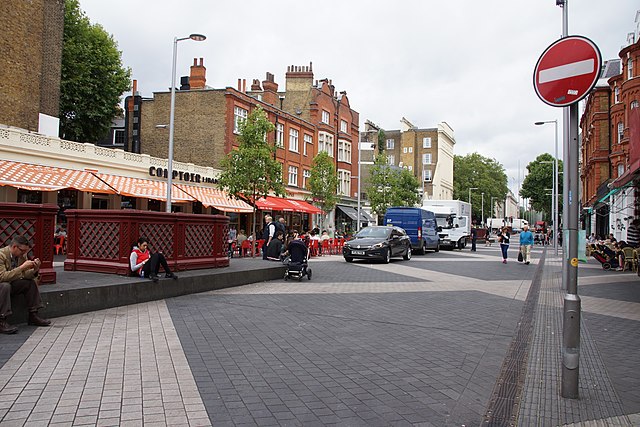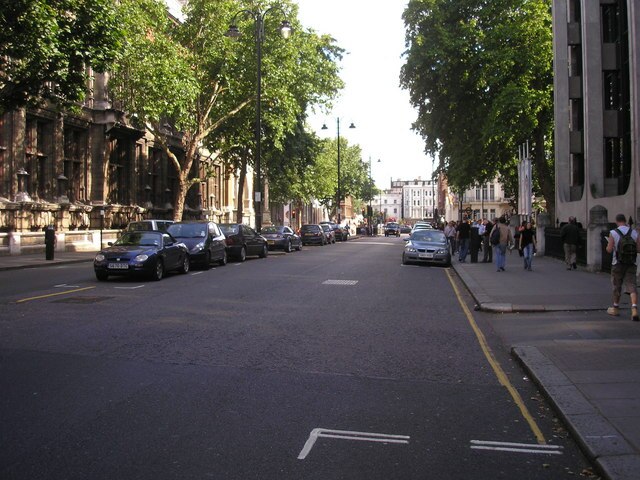Albertopolis is the nickname given to the area centred on Exhibition Road in London, named after Prince Albert, consort of Queen Victoria. It contains many educational and cultural sites. It lies in the former village of Brompton in Middlesex, renamed as South Kensington, split between the Royal Borough of Kensington and Chelsea and the City of Westminster, and the area bordered by Cromwell Road to the south and Kensington Road to the north.
Aerial view of Albertopolis, South Kensington. The Albert Memorial, Royal Albert Hall and Royal College of Art are visible near the top; the Victoria and Albert Museum and Natural History Museum at the lower end; Imperial College, the Royal College of Music, and Science Museum lying in between.
The Albert Memorial.
The Royal Albert Hall.
The Victoria and Albert Museum.
Exhibition Road is a street in South Kensington, London which is home to several major museums and academic establishments, including the Victoria and Albert Museum, the Science Museum and the Natural History Museum.
Exhibition Road following opening of shared space scheme during 2012
South of Thurloe Place near South Kensington tube station
Looking south prior to the shared-space scheme
The Natural History Museum and winter ice rink








